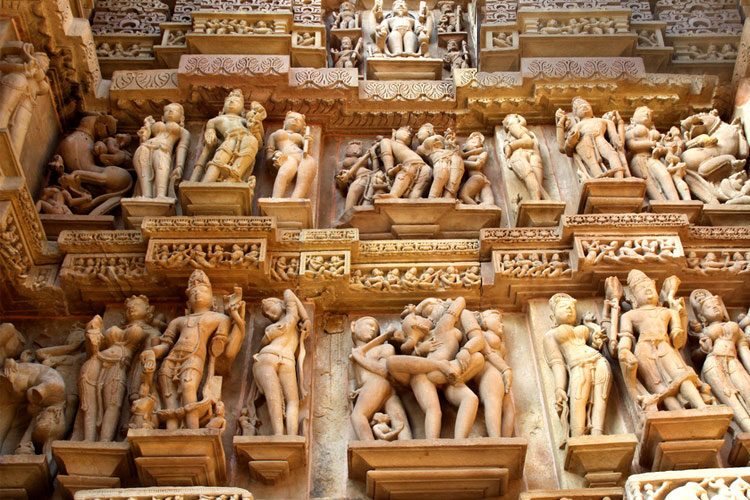I have always found India having an enigmatic and obscure pull over me. The one thing in this majestic and mystifying land which attracted me the most were the ancient temples. This labyrinthine connection between me and India was solidified a couple of years back when I decided to take a trip to Khajuraho – a UNESCO World Heritage Site which is considered as one of the seven wonders of this country.

Located in the Chhatarpur district of Madhya Pradesh, it is the largest group of Medieval temples built by the Chandela dynasty between the period of mid-10th century and mid-11th century. This place gained a worldwide reputation because of the stunningly elaborate erotic sculptures which graces the walls of the temples, depicting the lovemaking positions not only in existence at that time but also the ones outlined in the Kama Sutra.
The history behind the creation of these temples is equally fascinating. It is believed that when Hemavathy, a young woman was taking a bath in the dark under moonlight, her godly beauty seduced the Moon God himself. After they engaged in amorous lovemaking, she ran into the forests. Later, she gave birth to a son named Chandravarman and raised her alone. However, the Moon God promised Hemavathy that their son would one day grow up to be the ruler of a kingdom. This proved to be true when Chandravarman established the Chandela dynasty. It is said that the inspiration behind the sculptures came from the story of Chandravarman’s parents as they depict human passions to its most explicit detail.
The main attraction in this complex is the Lakshmana Temple. Built by Yashovarman, the temple is dedicated to Lord Vishnu. Along with the plethora of depictions of over six-hundred Hindu Gods, sensuous couples and animals, the main idol is located in the sanctum of the temple – a three-headed and four-armed Vishnu. This is Vishnu’s Vaikunta image where the central head depicts His human form, while the other two depicts His Narasimha(lion) and Varaha(boar) incarnations.
Like many other temples in India, the ones at Khajuraho are at the peak of Medieval art and architecture. Inside every temple, I stood marveling at the excellence of the master sculptors who intricately crafted such works of pulchritude over a 1,000 years ago. There once used to be 85 temples here, out of which only about 22 remain today. And this made me wonder, what more were these “lost” temples capable of revealing about the art, eroticism and lifestyle of ancient India?
![]()




